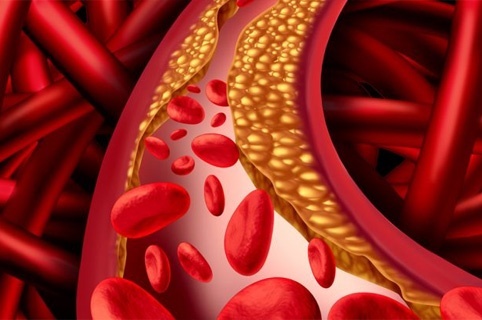Peripheral arterial disease
 2021-11-25
2021-11-25 Peripheral arterial disorder (PAD) is a disease of arteries other than the heart or brain. It is the deposition of fat along the arterial wall, resulting in stenosis, obstructive disease or tumor-like expansion of the lumen;
Mainly include carotid artery and vertebral artery (extracranial artery), upper extremity artery, lower extremity artery, renal artery, mesenteric artery disease; mainly caused by atherosclerosis, clinical manifestations such as intermittent claudication, lower extremity resting pain, severe high Blood pressure, renal failure, carotid artery stenosis, etc. are also often accompanied by myocardial infarction and stroke. The incidence of cardiac death increases. It is the third leading cause of atherosclerotic vascular disease after coronary heart disease and stroke.
PAD is a serious hazard to human health. According to epidemiological investigations, about 16% of people over 55 years of age suffer from PAD, and the prevalence of high-risk groups is as high as 20% to 30%. Because only one-third of PAD patients have typical limb ischemia, and two-thirds of patients have atypical or asymptomatic symptoms, the prevalence of PAD is often underestimated, and most patients with PAD cannot get timely treatment.
According to Industrial Securities estimates, the size of the peripheral arterial market in 2019 will be about 5 billion yuan. According to Frost & Sullivan's related report, the peripheral arterial intervention market is expected to grow to the tens of billions level by 2030 alone, with a scale of 12.2 billion yuan. The compound annual growth rate from 2019 to 2030 is 15.7%. .
Arterial diseases of the lower extremities account for about 80% of all PDA cases. Therefore, the general peripheral arterial market often refers to lower extremity arterial disease (Lead). The lower extremity arterial market is the core track of peripheral arteries, which is divided into upper knee and lower knee. In China, about 4% of lower extremity arterial diseases will show severe limb ischemia, and more than 3% of lower extremity arterial diseases will develop into acute limb ischemia. Most patients have mild or no symptoms, resulting in low awareness, low diagnosis and treatment rates. In 2019, the penetration rate of peripheral arterial disease-related surgery in the United States was 5.4%, while the penetration rate in China was only 0.2%.
The penetration rate of the entire peripheral arterial market. According to the data in the "China Cardiovascular Health and Disease Report 2020", the prevalence rate of lower extremity arterial disease in the natural population ≥35 years old in my country is 6.6%. 45.3 million cases. It is expected that with the intensification of aging, the number of LEAD patients will continue to increase, mainly because the number of diabetic patients may increase during the same period. Diabetes is the main cause of atherosclerotic lesions in the knee, and the most common symptom of the lower limbs is diabetic foot.
The treatment methods of PAD include medication, surgical treatment (interventional therapy and open surgery), and exercise therapy. Interventional therapy refers to percutaneous puncture guided by imaging equipment, using puncture needles, catheters, stents, balloons and other devices to perform minimally invasive diagnosis and treatment of diseases. Compared with open surgical treatment, interventional therapy has the characteristics of less trauma and quicker recovery after surgery. It is a major trend in the development of medicine. Interventional therapy has been called the three pillar disciplines together with surgery and internal medicine. The main endovascular treatments in the field of peripheral intervention include percutaneous balloon dilatation, stent implantation, plaque resection, laser angioplasty, cutting balloon, drug balloon, cryo-balloon, and thrombolytic therapy with drugs or Thrombus removal, etc. In simple classification, interventional surgical instruments for revascularization can be divided into traditional bare stents and bare balloons; drug-carrying equipment, drug balloons, and drug stents; volume reduction devices, plaque rotation, laser plaque ablation, and mechanical thrombus Removal, orbital plaque peeling, etc.
The treatment of LEAD has gone from the early surgical operation-ordinary balloon expansion-the era of nickel-titanium alloy stents-the era of drug-loaded device combination. In the 1980s, peripheral vascular intervention entered the era of minimally invasive interventional therapy. The products in the era of minimally invasive interventional therapy were initially ordinary dilatation balloons, followed by nickel-titanium alloy stents, and bare stents and bare balloons became the main products. The concept of intervention without implantation has begun to penetrate the peripheral field. Drug balloons and volume reduction devices are widely used in the peripheral field, impacting the dominant position of traditional bare stents and bare balloons, and leading peripheral interventions into a new era.





